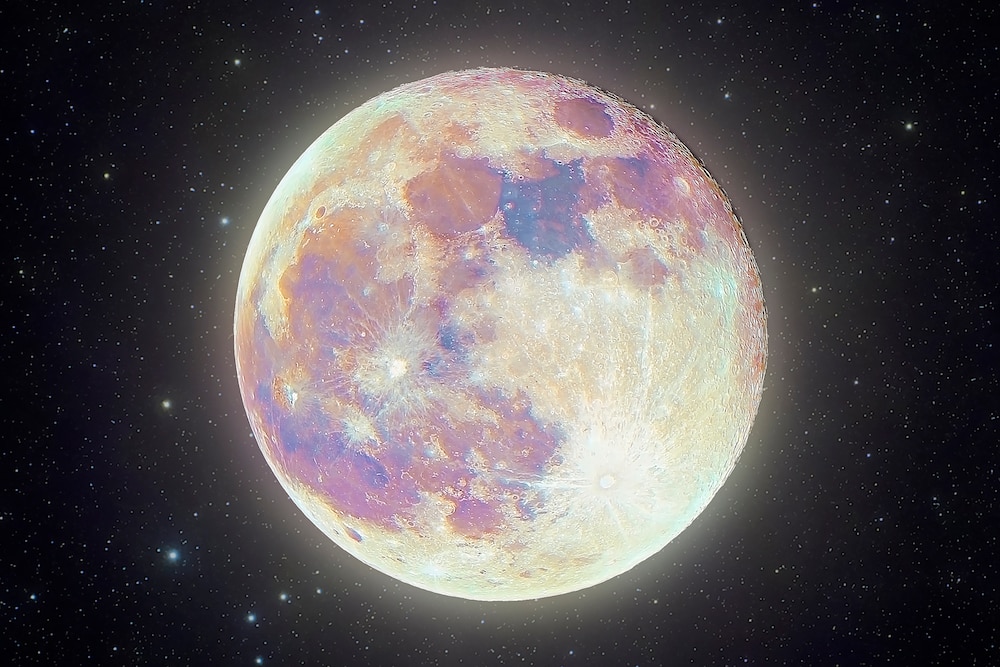Create a free profile to get unlimited access to exclusive videos, sweepstakes, and more!
Moons might be the ultimate alien detectors
...that is, if we find any exomoons.

Is there anything out there with a pulse (or at least some indicator that it’s alive)? We don’t know yet, but if an exoplanet seems habitable, maybe we should look at its moons.
Exomoons and how they form could give away conditions that tell whether a planet may or may not have spawned life. The Moon may be a humongous beat-up space rock, and while it looks pretty dead, the orb that made werewolves a thing is one of the forces that breathes life into Earth. Its gravitational pull obviously controls tides, and has an influence over how long days and nights are as well as the weather and climate, factors that the survival of life-forms often depends on.
What sets Earth’s moon apart from many others is that it is so huge compared to our planet. It is 27% the size of Earth, which may not sound like much but might be telling us about the moons that potentially habitable planets should be expected to have. Researcher Miki Nakajima of the University of Rochester, who led a study recently published in Nature Communications, thinks the search for life could soon change. Moon formation might be telling us something.
“At least for Earth, the Moon stabilizes Earth's spin axis tilt by a few degrees and helps to offer a stable climate,” she told SYFY WIRE. “If somehow we could figure out that the Moon stabilizes the planetary spin axis tilt, that would be great.”
But wait. We haven’t actually found any exomoons yet. There have been candidates spotted, but whether it really is an exomoon remains unknown. This why Nakajima and her team used simulations, which were based on how our moon is thought to have formed, to figure out what types of planets might be most likely to form a moon whose size in relation to that planet is similar to the Moon’s size compared to Earth’s. The Moon is thought to have emerged when something the size of Mars smashed into nascent Earth around 4.5 billion years ago.
When proto-Earth was supposedly gobsmacked by the hypothetical object “Theia,” a partially vaporized disc formed around the young planet. The disc eventually cooled, and blobs of liquid solidified into moonlets, or lunatesimals — the Moon equivalent to planetesimals. These would eventually collide with each other and accrete into what we now know as our satellite. If a planet is too massive, an impact similar to the one Earth experienced would leave a completely vaporized disc in its wake. Moonlets are slowed down by gas drag from vapor, and they end up falling onto the planet. That can be problematic for creating moons. So can being too close to a star.
“It's better to look for planets that are not too close to their host stars,” said Nakajima. “Planets close to their host stars have difficulty keeping long-lived moons because the orbits of the moons can be affected by the stars and the moons' orbits can be unstable.”
Think about it. Mercury has no moon. Mercury is also the closest planet to the Sun. Neither does Venus, the second closest planet to the Sun, and our star’s immense mass also means monstrous gravity. If either of these planets ever had any moons, they were probably flung off into space. There are some suspicions that planets orbiting white dwarf stars may have a chance at hosting life. If any do, it might come down to the size and heat of the star in addition to distance. White dwarfs are not nearly as gargantuan or as scorching as stars like our own.
Whether the right type of exomoon and planet are found will depend on the planet’s mass to some extent. Much of the continuing search for extraterrestrial life has been focusing on planets that are at least six Earth masses, many of which would probably be the right size to form those completely vaporized discs that are doom for moons being born. Seeking out smaller planets may give scientists a better chance of finding a dynamic similar to the Earth and Moon’s. Then there is the question of whether the spin of a planet and its moon’s orbit align or not.
“If the planetary spin period of the planet and orbital period of the moon are not the same, ocean tides can be observed on the planet,” Nakajima said. “This might be beneficial for life on the planet.
Maybe somewhere, there is alien werewolf howling at its moon.


























